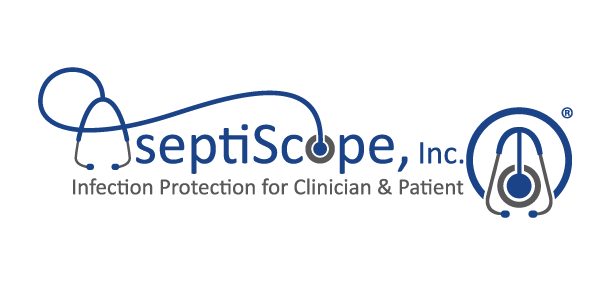- Study finds low levels of stethoscope hygiene education and practice and no significant reduction in stethoscope diaphragm contamination, including multidrug-resistant bacteria, after educational interventions
- Authors call for elevation of stethoscope hygiene to that of the hands, establishment of practical and accurate hygiene guidelines, and evaluation of alternative options for stethoscope hygiene, including barriers
- Findings add to the growing body of data highlighting longstanding stethoscope hygiene shortfalls and the resultant significant threat to patient health
April 26, 2021 San Diego CA – A new study in the journal PLOS ONE entitled “A quasi-experimental study on stethoscopes contamination with multidrug-resistant bacteria: Its role as a vehicle of transmission” found low levels of stethoscope hygiene education and practice among clinicians and no significant reduction in levels of stethoscope contamination, including nosocomial pathogens and multidrug-resistant (MDR) bacteria, despite educational intervention (consisting of flyers and 2 separate one-hour slide presentations).
In this study involving 98 clinicians in a university-affiliated teaching hospital in Seoul, South Korea, self-reported stethoscope cleaning with alcohol swabs/gel or soap and water, increased after educational interventions for “every patient” from 10% to 20% and from 21% to 34% for “at least once per week,” while those reporting cleaning “on occasion” fell from 51% to 40.8% and “not at all” from 18% to 4.1%. Despite the overall self-reported increase in hygiene practices, contamination rates of stethoscope diaphragms were not significantly reduced after the educational intervention as compared to baseline (97.9% vs. 91.5%, p=0.073) and there was no decrease in the contamination rate of MDR bacteria. Additionally, in the post-educational study period, a shared stethoscope was found to be the vector in the infection of three patients with K. pneumoniae in the ward where the stethoscope was shared.
“This timely study powerfully illustrates the need, as the authors conclude, for the healthcare community to elevate the practice of stethoscope hygiene to that of the hands,” said Dr. Frank Peacock, Chief Medical Officer at AseptiScope®. “Current hygiene guidelines simply don’t consider the work pace in the real-world clinical settings and the ineffectiveness and inadequacies of today’s standards of care are painfully apparent. The potential of a newer, workflow-compatible stethoscope hygiene intervention, The DiskCover System from AseptiScope, has been well-established and it holds the promise to become a new standard of care in the effort to protect patients from stethoscope-borne pathogens,” Dr. Peacock added.
The DiskCover™ System (www.diskcover.com), the flagship product from AseptiScope, Inc., is the first and only touch-free stethoscope barrier dispensing system. The System dispenses single-use aseptic disk covers to protect patients from exposure to harmful pathogens and contaminants on the stethoscope diaphragm. The compact System, designed to be mounted at the patient bedside, instantly applies individual disk covers, minimizing workflow disruption while encouraging clinician compliance.
About AseptiScope, Inc.
AseptiScope is a privately funded San Diego, California based, clinical innovation company formed in 2016. The organization is founded and led by clinical innovation experts, leading medical researchers, and practicing physicians. The AseptiScope mission is to design, develop, manufacture and commercialize novel solutions that ensure “Infection Protection for Clinician & Patient.” The company is introducing the first true solution for the longstanding challenge of stethoscope contamination: The DiskCover System. Visit www.diskcover.com for more information.
AseptiScope, Clean Cassette, and related logos are registered trademarks of AseptiScope, Inc. DiskCover and related logos are trademarks of AseptiScope, Inc.
Media Contact, AseptiScope:
AseptiScope, Inc.
Irene Mulonni
irene@mulonni.com
858.859.7001
